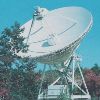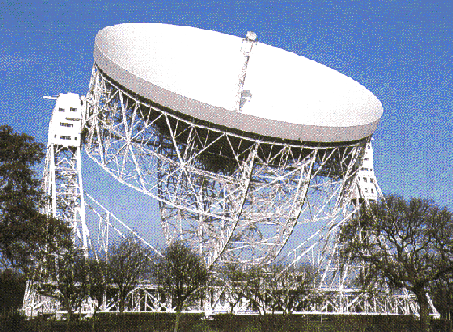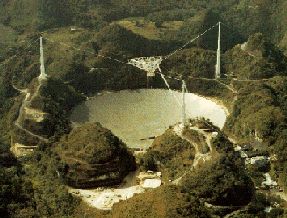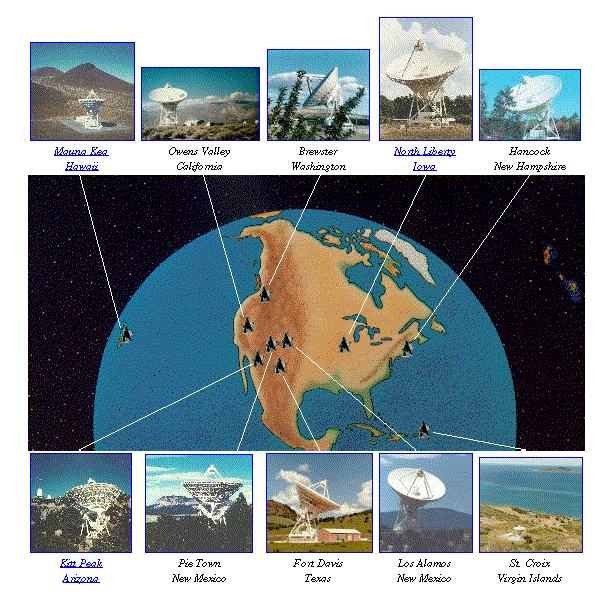Radio Telescopes


| Gene Smith's Astronomy Tutorial Radio Telescopes |
 |

Radio Telescopes

Radio telescopes can be made much larger than optical/infrared telescopes because the wavelengths of radio waves are much longer than wavelengths of optical light. A rule of thumb is that the reflecting surface must not have irregularities larger than about 1/5 the wavelength of light that is being focused. By that criterion, a radio telescope is several hundred thousand times easier to configure than an optical telescope of the same size.

| The Arecibo Observatory radio telescope is a 305 meter reflecting surface in a natural limestone sinkhole in NW Puerto Rico. Because the telescope cannot be pointed independently, the telescope is "steered" by the gregorian instrument housing supported over the telescope. |
Because radio signals are detected as waves, signals from different telescopes can be added to simulate or synthesize the resolving capability (pin- pointing) of a much larger telescope. The National Radio Astronomy Observatory's Very Large Array (VLA) near Socorro, NM, consists of 27 radio telescopes, each 25 meters in diameter. They are deployed on a Y-shaped track that can be extended up to 36 km. The VLA has the resolving power of a 36km telescope (but only the collecting-area and sensitivity of a 130m telescope).

Very Long Baseline Interferometry
The Very Long Baseline Array is a global interferometer combining signals from radio telescopes from the Virgin Islands to Hawaii. This is equivalent to a telescope nearly as large as the earth.


![]() Space Telescopes
Space Telescopes
![]() Reflecting Telescopes
Reflecting Telescopes
![]() Education & Outreach
Education & Outreach
![]() CASS Home
CASS Home
Conducted by Gene Smith, CASS/UCSD.
Comments?
You may send email to hsmith@ucsd.edu
Prof. H. E. (Gene) Smith
CASS 0424 UCSD
9500 Gilman Drive
La Jolla, CA 92093-0424
Last
updated: 21 April 1999